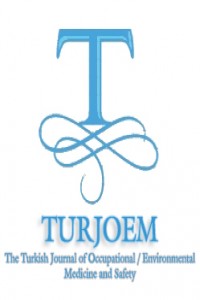Abstract
Human and
wildlife populations all over the world are
exposed to more than 800 endocrine disrupting chemicals, cadmium (Cd) and
polychlorinated biphenyls (PCBs) being among them. However, data on Cd and PCBs
effects as thyroid disruptors are limited, especially at low level exposure and
particularly on the mixture of these ubiquitous pollutants. Thus, we
investigated the effect of 28-days oral treatment of rats with six different
doses of Cd or PCBs (ranging from 0.3-10 mg Cd/kg b.w. or 0.5-16 mg PCBs/kg
b.w.), while nine groups were treated with different dose combinations of Cd
and PCBs (1.25, 2.5 or 5 mg Cd/kg b.w./day with 2,4 or 8 mg PCBs/kg b.w./day).
Our results
showed that oral treatment of rats with different doses of Cd during 28 days
induced dose-dependent decrease of serum triiodothyroxine (T3) while
statistically significant reduction of thyroxine (T4) was observed for doses
≥1.5 mg Cd/kg b.w. revealing that T3 hormone is more sensitive to Cd than T4.
This finding suggests that Cd interferes with thyroid function predominantly at
extrathyroidal level. PCBs, on the other hand, showed more profound effects on
T4 hormone levels presumably as the result of PCBs direct effect on thyroid
gland. The results on the effects of co-exposure to Cd and PCBs on T3 and T4
hormones, analyzed using methodology based on the differences in slopes of
dose–response curves, indicated synergistic interactions between these two
chemicals for the effects on thyroid function, i.e. levels of thyroid hormones
in serum.
Further
intensive scientific work is needed to improve our understanding of the impacts
of thyroid disruptors on human health and thus decrease the rise of thyroid-related
diseases and disorders.
This work was partly financially supported
by the Ministry of Science and Technological Development (Grant No. III4600)
References
- Vesna MATOVIC, Aleksandra BUHA Department of Toxicology “Akademik Danilo Soldatović”, Faculty of Pharmacy, University of Belgrade
Abstract
References
- Vesna MATOVIC, Aleksandra BUHA Department of Toxicology “Akademik Danilo Soldatović”, Faculty of Pharmacy, University of Belgrade
Details
| Journal Section | Articles |
|---|---|
| Authors | |
| Publication Date | February 16, 2017 |
| Published in Issue | Year 2017 Volume: Volume 2 Issue: İssue 1 (1) - 2.İnternational Congress Of Forensic Toxicology |


